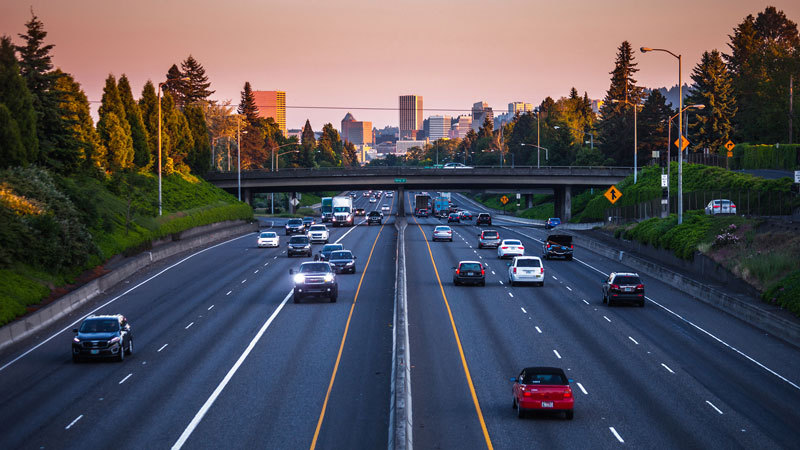Coastal Effect






PHOTO: STOCK
July 18, 2022
BY Melissa Anderson
Eleven years ago, California led the way with the implementation of its Low Carbon Fuel Standard, which continues to be a guiding force for clean fuel policy on the West Coast and beyond. Since it took effect, the structure and scale of the Golden State’s LCFS has shown that state-level market mechanisms for low-carbon transportation fuel are not only feasible, but powerfully effective. Oregon created its own clean fuel standard in 2016 and, according to Graham Noyes, founder and executive director of the Low Carbon Fuels Coalition, is competitive with California’s LCFS credit value. And starting next year, Washington state’s own low carbon fuel standard will kick in—bordering up to both Oregon and British Columbia’s existing low carbon fuels program, creating a contiguous 3,000-mile LCFS zone along the coast.
“The vision of a Pacific Coast collaborative, developing climate change policy together, creating a steady coastline of clean fuel standards from Southern California to the northernmost tip of British Columbia, is happening,” Noyes says. “These designs are gaining a lot of interest in other states, and also internationally with Canada expanding its programs (see news on page 12), Brazil having it’s renewable fuels program and many other countries looking at [how they’re structured].”
The California Air Resources Board, which administers the state’s LCFS, continues to adjust the program for new opportunities to make faster headway toward the state’s carbon reduction targets. Currently, the most efficient grain ethanol receives a modest LCFS bump in California. Carbon capture and sequestration (CCS)—which 50-plus Midwest ethanol plants are currently planning to do—could cut LCFS carbon intensity (CI) scores in half. Beyond that, more double-digit reductions will be tough to find without credit for low-carbon farming practices. California’s LCFS currently gauges each biofuel pathway on the merits of its process technology, energy inputs and generalized feedstock category. Corn is corn, regardless of how it is cultivated.
But even without credit for low-carbon farming practices, California is a favorable market for corn ethanol sales from plants qualified to do it. Ethanol sold into the state has an average CI rating of just over 58, compared to gasoline’s 90-100 CI rating and average corn ethanol hovering around 70. CI ratings are based on grams of CO2 emitted per megajoule of fuel; each credit unit, usually priced between $100 and $200, equal 1 ton of CO2 reduction. The gallons-to-tons conversion is complicated, but the resultant incentive, and the current price of gas in California, makes conventional ethanol attractive, particularly higher blends. In fact, sales of E85 are booming in California, even while the number of flex-fuel vehicles (FFVs) on the road are diminishing due to phased-out manufacturing. Noyes says E85 use in California grew in volume by 50 percent between 2020 to 2021. This increase in demand is due, in part, to greater availability of E85 at the pump, but also the significant difference in price per gallon between E85 and traditional gasoline, sometimes reaching a spread of $2 or more.
“We will continue to see growth there and we’re looking for opportunities to get more FFVs into California, and more FFV retrofits done,” Noyes says.
Scott Coye-Huhn, program manager for low-carbon fuels at SCS Global Services, says the clean fuel markets in Oregon and Washington are sometimes viewed as secondary to California’s program, but are also highly attractive destinations for LCFS-qualifying fuels. The three contiguous low-carbon markets (plus British Columbia’s program, which was created in 2008 and implemented in 2013), create a massive, geographically connected market for renewable fuel with multiple outlets and shipping synergies.
“The incentive is still to sell into California, but you may have reasons to sell in Oregon or Washington,” says Coye-Huhn. “To me, it’s about having a bigger market and more opportunities to sell ethanol.”
The bottom line, Coye-Huhn says, is that the West Coast’s collective push to meet transportation-related carbon reduction targets is creating a massive low-CI technology and investment pull that is rippling through the biofuel sector, evident in the rise of renewable diesel and ethanol’s move into CCS. “The incredible amount of biofuel gallons and projects announced in the past year, in my opinion, is evidence that the market likes low-carbon fuel programs, and the investments and jobs are following,” he says.
One policy mechanism expected to have a real impact on the market is the Q45 tax credit, which provides a federal tax credit to power plants and industrial facilities (like biorefineries) that capture and store CO2 that would otherwise be emitted into the atmosphere. The program appears to be moving the needle on CCS investment, layering an extra monetary incentive on top of the enhanced value of biofuel produced at facilities engaged in CCS.
While the ethanol industry may experience modest growth in the next three to five years, very little new greenfield construction is expected. Instead, existing producers are doing all they can to become as efficient as possible while, through CCS—and possibly agricultural carbon accounting—cutting their CI scores in half.
“I don’t think you will see new ethanol plants built because of low-carbon fuel programs, but we will certainly see the facilities remain profitable and competitive because of those programs,” Coye-Huhn says. “What they’re doing with CI scores is amazing. And I can’t think of any other industry in the world that, en masse, is forging together to capture carbon. It’s amazing how they are responding by trying to reduce their carbon scores, and that’s because of these LCFS programs.”
The addition of LCFS programs in Oregon and Washington is aligned with, and adding to, the momentum and interest that California has created over the past decade-plus. For years, market experts have speculated that what California does with clean fuels may ultimately be replicated elsewhere, not just in bordering states but nationwide. Indeed, that could soon be the case. Clean fuel legislation has been attempted in other states like Minnesota (see “Moving Stepwise Toward State Clean Fuel Standards” on page 32) and New Mexico, which have both attempted to take up low-carbon fuel standards.
“We have been working with stakeholders on active bills in three states—Minnesota, New York and New Mexico. None of them passed,” Noyes says. “In New York and Minnesota, the bills didn’t get past their initial introduction. In New Mexico, however, the bill went to a tie on the House floor, falling one vote short.”
To Noyes, seeing an oil and gas state like New Mexico come so close to passing a clean fuels standard—an act that would have required the carbon reduction of its transportation fuels by 20 percent by 2030 and 30 percent by 2040—was a powerful and unexpected near win for biofuels in the Southwest. “We don’t expect to necessarily win bill passage the first time a bill is introduced,” he says. “It takes a lot of work to get legislatures and stakeholders comfortable with the legislation, and to build support and create awareness around the benefits of clean fuel standards. We think we will be back next year in all those states, and other states moving forward.”
At the federal level, the idea of a national LCFS has been floated numerous times, sometimes as policy bolstering the nation’s existing Renewable Fuel Standard, and sometimes as a replacement of the RFS. Industry observers believe these national LCFS efforts are an indication of how much state low-carbon policy structures have gained attention and credibility over time. A national LCFS, however, is considered by some to be a potential quagmire for corn ethanol, and the U.S. biofuel industry more broadly supports the development of state and regional clean fuel standards that complement the current RFS.
Coye-Huhn says regardless of the approach, “the whole ethanol community needs to get behind these LCF programs”—not only on the West Coast but in the Midwest—especially now, as consumer sentiment about biofuels is positive amid record-high gas and diesel prices. “This will create more opportunity and more revenue for farmers, and it will also create green policies that focus more on ethanol,” he says. “Big picture—broad support for policy expansion across the Midwest is needed.”
A potential flywheel in the development of a Midwest clean fuels standard is carbon capture. Ethanol plant CCS, experts say, could lower each participating biorefinery’s ethanol CI by 20 to 30 points, creating instant new value for grain ethanol shipped into LCFS markets.
“If we can capture carbon, liquify it, put it in pipelines and put it underground, scores go from 60 to 40 [or lower],” Coye-Huhn says. “That’s a huge value.”
On the agricultural side, there’s still a significant avenue of growth available to bring down carbon scores. Coye-Huhn says allowing growers to play a meaningful role in state and regional LCFS programs starts with the monetization of proven low-carbon farming practices. He says the agricultural economy is a massive opportunity to reduce carbon emissions, which includes the reduction of inputs and a focus on preserving soil carbon. Current low-carbon fuel regulations in the U.S. do not enable this type of incentive because quantifying soil carbon sequestration is challenging and still new. But “the technology and will” to make it happen exists, Coye-Huhn says. “The American farmer is creative, resilient and adaptive. They are the original environmentalists and have always cared about the health of their fields and ecosystem,” he says. “We need to include them in this effort to unleash their creativity and potential.”
Grower practices appear to hold the answer to future CI reductions beyond CCS and increased plant efficiency, but Noyes says many looming questions remain. “To what degree are we going to get these programs into Midwestern states,” he asks. “Can we build these programs to benefit precision ag and regenerative ag, both of which keep more carbon in the soil? And, overall, what will benefit farmers the most?”
Author: Melissa Anderson
Contact: editor@bbiinternational.com
Advertisement
Advertisement
Related Stories
The U.S. EPA on July 8 hosted virtual public hearing to gather input on the agency’s recently released proposed rule to set 2026 and 2027 RFS RVOs. Members of the biofuel industry were among those to offer testimony during the event.
The U.S. exported 31,160.5 metric tons of biodiesel and biodiesel blends of B30 and greater in May, according to data released by the USDA Foreign Agricultural Service on July 3. Biodiesel imports were 2,226.2 metric tons for the month.
The USDA’s Risk Management Agency is implementing multiple changes to the Camelina pilot insurance program for the 2026 and succeeding crop years. The changes will expand coverage options and provide greater flexibility for producers.
EcoCeres Inc. has signed a multi-year agreement to supply British Airways with sustainable aviation fuel (SAF). The fuel will be produced from 100% waste-based biomass feedstock, such as used cooking oil (UCO).
President Trump on July 4 signed the “One Big Beautiful Bill Act.” The legislation extends and updates the 45Z credit and revives a tax credit benefiting small biodiesel producers but repeals several other bioenergy-related tax incentives.
Upcoming Events










